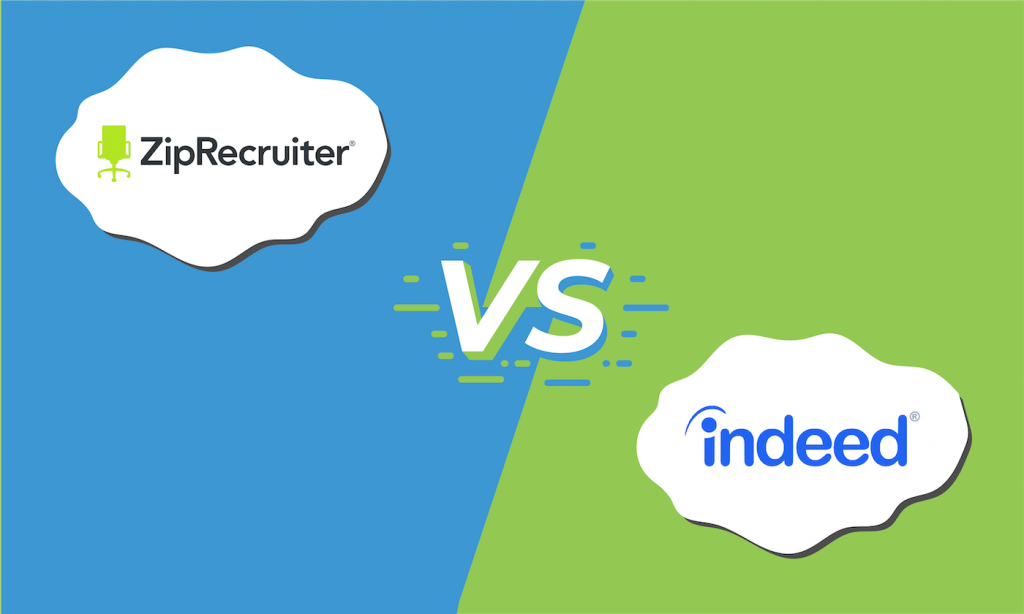Key takeaways
Wave vs. QuickBooks: Which Is Better?
In our evaluation, we found that QuickBooks is the better solution for most small businesses. With its robust A/R, A/P, and inventory features, we see it as a go-to and safe pick for businesses wanting access to important accounting features. However, Wave can be the better choice if you don’t need to track inventory and require simple tracking of income and expenses.


Pricing
Starts free
Starts at $30 per month
A/R (Invoicing)
Customize invoices and email them to customers
Design invoices and accept partial payments from receivables
A/P (Billing)
View unpaid bills in total or per vendor
Convert POs into bills
Inventory
Has no inventory features
Tracks inventory and COGS
Cash & Banking
Reconciles bank accounts without timing differences
Can reconcile bank accounts with timing differences
Reporting
Has 13 reports, including the essential financial statements
Has 107 generic and special reports
Wave: Best for Microbusinesses and Occasional Sellers
Wave is free software that offers essential accounting features, such as invoice creation, bank reconciliations, and chart of accounts. It can also accept payments subject to a fee. It also offers a paid plan that adds premium features like unlimited users, automatic bank imports, and a discounted fee for the first 10 online payments from customers each month.
Microbusinesses and occasional sellers will find Wave suitable for their needs because it is free and charges minimal transaction fees. If you decide to get the paid plan, Wave is still more affordable than QuickBooks Online.
Pros
- Includes a free plan.
- Offers an affordable paid plan for microbusinesses and occasional sellers.
- Is easy to set up and use.
- Can accommodate unlimited users in the paid plan.
Cons
- Is not as robust as QuickBooks.
- Can’t track inventory and compute COGS.
- Has no free trial in the paid plan.
QuickBooks: Best for Established Businesses
QuickBooks Online is the most popular small business accounting software in the United States. It is a solid pick for established businesses that need all the essential accounting features. Its class and location tracking add more granularity in reporting and tracking, making it easier for businesses to capture and track all income and expenses efficiently.
Established businesses can use QuickBooks Online as a reliable accounting tool that will help them track invoices, bills, cash flow, inventory, payments, and other types of transactions.
Pros
- Has class and location tracking.
- Can track project income and costs.
- Can reconcile bank accounts with timing differences.
Cons
- Requires Plus plan to enjoy most of QuickBooks’ best features.
- Limits number of users per plan with no option to add more even for an additional fee.
Wave vs. QuickBooks: A Detailed Comparison


Pricing
Free or $16 per month
$30 to $200 per month
Free trial
No
30 days
Number of users
1 or unlimited
1 to 25
Create and send invoices
Yes*
Yes
Process and pay bills
Process only*
Process on QuickBooks and pay via QuickBooks Bill Pay
Track inventory
No
Yes
Track by class or location
No
Yes
Track 1099 payments
Yes*
Yes
Capture receipts
Included in Pro but separately billed in Starter
Included in all plans
Payroll
Yes**
Yes
Assisted bookkeeping
Via Wave Advisors**
Via QuickBooks Live** or independent ProAdvisor
*Included in Wave’s free plan.
**Billed separately.
Pricing
WINNER: Wave
When it comes to QuickBooks vs. Wave in terms of pricing, Wave takes the lead because it has a free plan and an affordable paid tier. If you have a limited budget and don’t mind not getting advanced features, we recommend choosing it. Under the free plan, you get most of its offerings — except for automatic import of banking transactions and reminders.
Wave has two plans:
- Starter: Free for one user.
- Pro: $16 per month for unlimited users.
The Starter plan offers unlimited bookkeeping and an online payment charge of 60 cents plus 2.9%. With the Pro plan, you get everything in Starter — plus automatic bank imports, automatic late payment reminders, receipt capture, and unlimited users. For the first 10 online payments, Wave will charge only 2.9% per transaction.
QuickBooks Online is more sophisticated than Wave, which is why it’s understandable that it comes at a higher price:
- Simple Start: $30 per month for one user.
- Essentials: $60 per month for up to three users.
- Plus: $90 per month for up to five users.
- Advanced: $200 per month for up to 25 users.
For small businesses, our top recommended plan is Plus. It comes with five users, class and location tracking, inventory tracking, and project profitability. You can also enjoy the financial planning feature, which lets you create budgets based on real-time data.
A/R (Invoicing)
WINNER: QuickBooks
Though both platforms offer decent invoicing features, QuickBooks edges Wave out because it offers more advanced features, such as accepting partial payments and creating invoices on projects. These are great for service-based businesses because QuickBooks lets users create invoices from estimates or quotes.
QuickBooks Online gives you the ability to design invoices, customize templates, and add custom fields. You can also add the company logo and details to make invoices more personalized. It even allows you to print invoices and send them to customers. QuickBooks will send invoices to the email address of the recipient, requiring fewer steps for your bookkeeper.
When you enable payment reminders, QuickBooks will send email reminders to customers automatically so that you don’t have to do it manually.
In Wave, invoicing is rather straightforward. However, some invoicing features are locked behind the Pro plan. For instance, you can only edit invoice templates and send invoices via email with Pro.
So, if you want the free Starter tier, you’ll have to send invoices to customers manually by sending a PDF invoice copy via email. But if you only need to send a few invoices, such as fewer than five per month, manual sending would not be that big of a deal.
A/P (Billing)
WINNER: QuickBooks
Managing and paying bills in QuickBooks is far superior compared to Wave. QuickBooks gives users more control over different types of bills, especially in converting POs into bills. It can also print checks for vendors that prefer check payments. If you subscribe to QuickBooks Bill Pay, you can process bill payments within QuickBooks directly.
QuickBooks Online’s A/P features offer a lot of flexibility for both service-based businesses and inventory sellers. If you sell inventory, you can easily convert POs into bills. Inventory items can also be added to the Products and Services menu. For service providers, you can create permanent service items so that you can later add them to invoices.
If some vendors prefer check payments, QuickBooks Online has a check printing feature. This comes in handy since you don’t need to write checks manually. Moreover, subscribing to QuickBooks Bill Pay makes bill payments easier because it enables you to pay vendors within QuickBooks. Therefore, there’s no need to transfer to your online banking app to wire payments.
While Wave may not be as powerful as QuickBooks, it offers decent bill tracking and A/P tracking. You have complete oversight of unpaid bills and, if you have the Pro plan, then you can attach captured receipts to bill entries. However, Wave doesn’t have recurring bills like QuickBooks. So, if you have vendors that bill regularly, you may want to consider if not having a recurring bills feature is a worthy compromise for affordable pricing.
Inventory
WINNER: QuickBooks
QuickBooks is the clear winner in this criterion since Wave lacks inventory tracking features.
QuickBooks Online offers useful inventory features, such as the ability to record POs, track stock levels, set reorder points, and compute inventory cost. Whenever you record a sale, QuickBooks will compute COGS automatically and deduct the inventory sale from the inventory account and stocks.
Aside from that, you can store important inventory information, such as descriptions, optimum stock levels, and stock keeping units (SKUs). QuickBooks can also record returned inventory whenever customers return it.
Wave doesn’t have inventory tracking features. If you still want Wave, you’ll have to track inventory separately and make periodic adjusting journal entries. You may also consider third-party inventory management software and Zapier integration if you want to streamline processes.
Cash & Banking
WINNER: QuickBooks
Both providers come with great cash and banking features, but QuickBooks stands out because of its flexibility. With it, you can add multiple bank accounts and reconcile them either manually or through bank feeds. Wave also does bank reconciliation but it cannot reconcile timing differences like QuickBooks.
Users can add multiple bank accounts and have them reconciled in different ways. If you don’t want to connect your bank account, you can either upload the PDF bank statement or perform manual reconciliation by comparing your paper statement with the QuickBooks register. The system can handle timing differences and account for bank service charges and interests automatically.
If there are ever book reconciling items that have not yet been recorded, you can save the reconciliation for later while you add missing book entries. Aside from bank reconciliations, you can print checks in QuickBooks.
Wave’s bank reconciliation only works if both Wave and the bank statement have the same recorded entries. This feature is useful for payments and purchases using debit or credit cards. However, if you have deposits in transit or outstanding checks, Wave won’t recognize those items because it doesn’t deal with timing differences.
Hence, Wave’s bank reconciliation is fine if you only record transactions when they clear the bank. However, it won’t work if you record payments when issued and deposits when checks are received.
Reporting
WINNER: QuickBooks
QuickBooks Online has a more robust reporting feature than Wave. It offers multiple premade reports that you can generate in a few clicks. Wave also does great in reporting because it has all the essential financial statements but lacks the customizability of QuickBooks. If you’d like to create granular reports like income by class or expense by location, QuickBooks can do it in a few clicks.
QuickBooks Online has 107 built-in reports in its Reports page, and you can generate any of those reports with a few clicks. QuickBooks will redirect you to a different page where you can customize the report by changing the report headings and modifying the columns.
Its custom report builder can help you create special reports that are based on existing reports so that you can generate the report that you need. See the complete list of QuickBooks reports in the QuickBooks Help Center.
There are 13 reports in Wave, which include the essential financial statements. Other reports are purchases by vendor, aged payables, income by customer, and aged receivables to name a few. Though Wave has few reports, we believe they are enough for microbusinesses or occasional sellers.
Wave vs. QuickBooks: Ready To Choose?
In our QuickBooks vs. Wave comparison, QuickBooks takes the lead because it has all the features needed for small business accounting. Although it’s the more costly platform, it offers you a lot of control over receivables, payables, inventory, and cash. Its reporting features are also versatile because it can create specific reports that provide more granular information than what you can derive from the basic financial statements.
Meanwhile, Wave remains a good pick if you don’t need all of QuickBooks’ features. If you have a microbusiness that needs to track income and expenses to compute income, Wave is optimal. Moreover, occasional sellers can stay with Wave’s free plan to save on monthly subscriptions.





